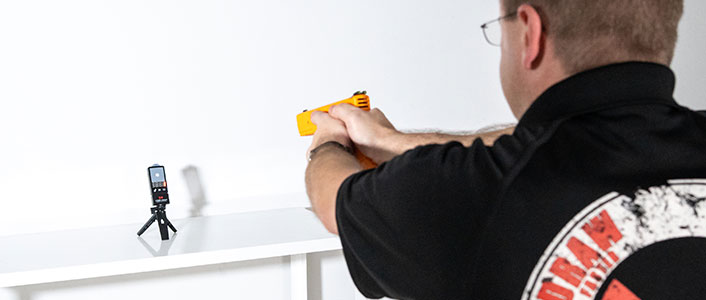
In these times of wildly fluctuating ammo supplies,* shooters are looking for the best dry-fire training system. Many are turning to laser target practice to incorporate the skills of dry-firing with the simulation of live-fire accuracy. Since most kits cost over $100, shoppers want to make sure they’re spending wisely to get the best laser dry-fire training system for the money. Still, in the long run, they’re cheaper than a few hundred rounds of live practice ammo, and they’ll last a lot longer.
Your shooting skills can diminish after just a week without practice. If you have a gun for personal defense, line-of-duty, or are a target shooter, you should be practicing consistently. Read on to learn more about what a laser training system is and explore the pros and cons of the different types.
*To see our frequently updated ammunition inventory that’s in stock and ready for shipment now, click here.
What Is Laser Target Practice?
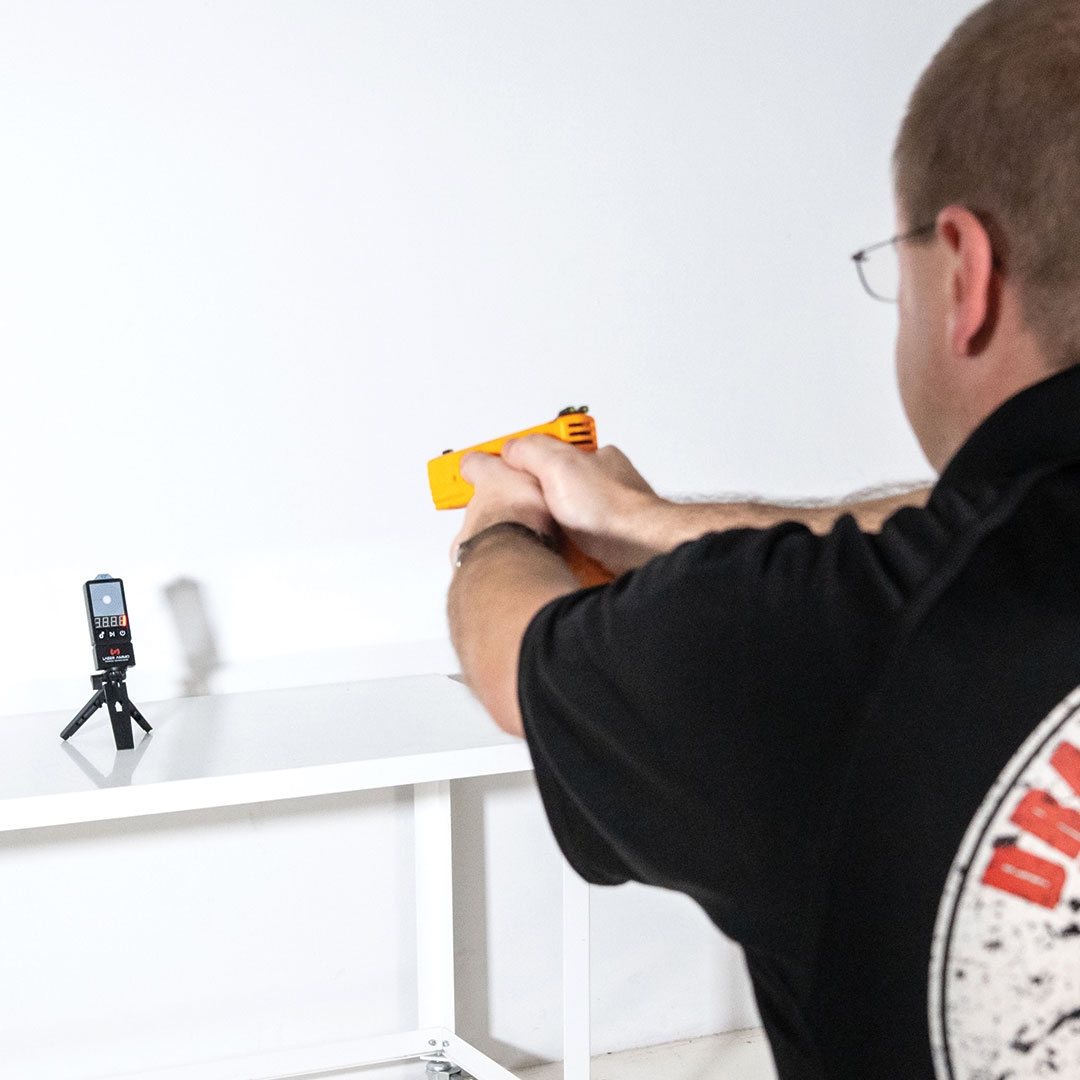
Laser Training With Pistol and Target
Have you ever been to a carnival shooting gallery booth that uses a replica gun to shoot light at targets that fall down or make noise? Then you’re already familiar with the concept of laser target practice. This is also like video games that use a plastic gun instead of a joystick or controller. Laser trainers are far more realistic and accurate than a carnival or video game, though. It’s a form of dry-fire training that is more reactive than the traditional method. They shoot lasers that help to track target acquisition, trigger control, and shot placement, allowing ammo-free practice for reinforcing skills of new shooters and helping train away bad habits in existing shooters. They don’t require any trips to the range, so they’re ideal for training at home in your spare time. Some have reactive targets or use on-screen targets, while others simply show the laser dot on a wall or paper target.
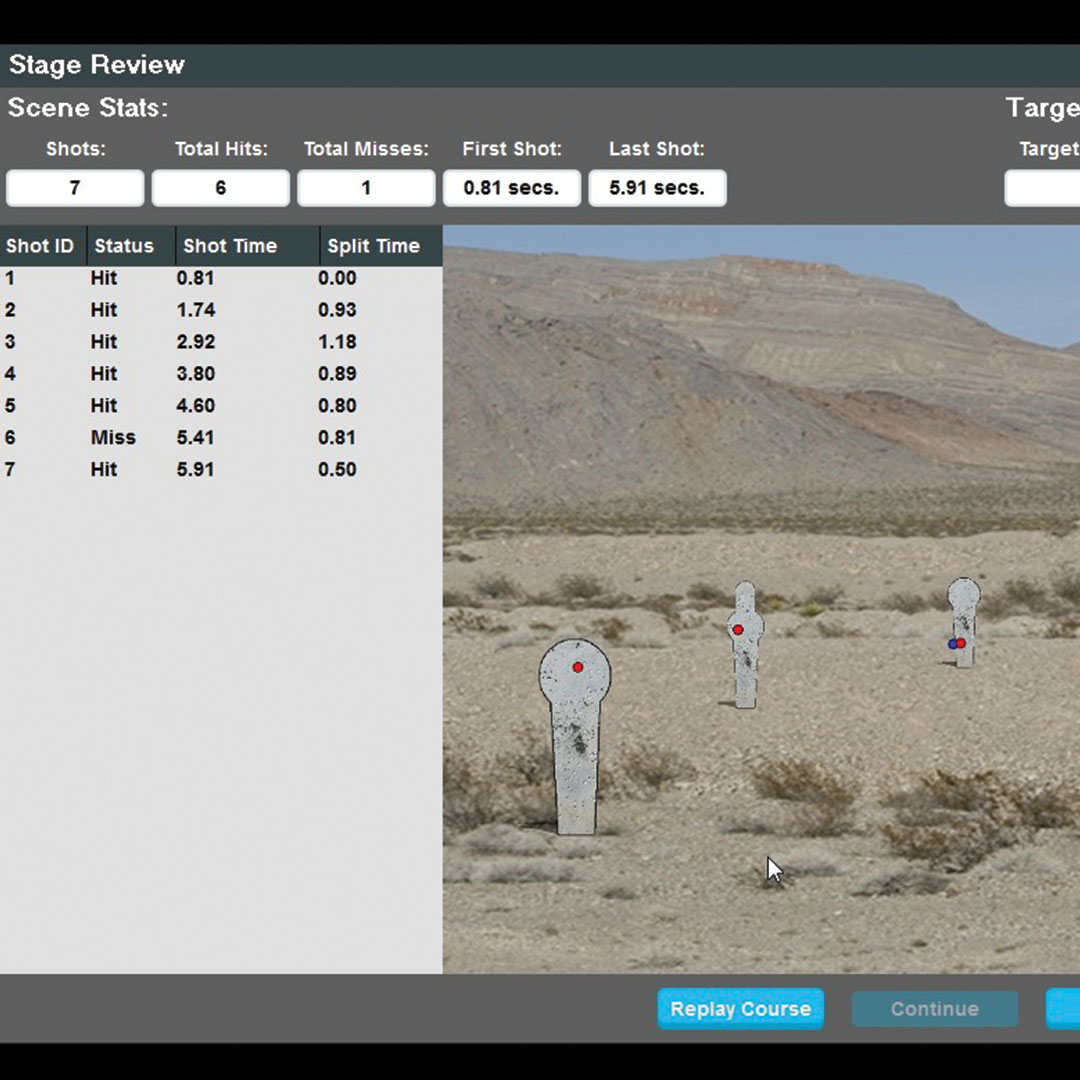
Laser Training On-Screen Reactive Target
Laser Training System Types
There are two basic types, and your budget and needs will determine what the best dry-fire training system is for you. One uses your existing firearm, and the other is a complete kit with a training gun and targeting system. All are battery-operated, which is really the only additional expense once you’re up and running.
Existing Firearm Systems
When using an existing firearm, remove all live ammunition from the room where you’ll be practicing to ensure that it cannot be introduced to the firearm, leading to an accidental or negligent discharge. Always follow the 4 Rules of Firearm Safety.
Universal In-Muzzle/In-Bore Trainers
These are the simplest systems, where the laser device is simply placed in the muzzle (bore) of the firearm. Some can be used in combination with snap-caps to protect the firing pin and allow you to chamber rounds from a magazine if desired.
Pros: inexpensive, works with multiple calibers and types of firearms, including rare and uncommon calibers
Cons: will need to be zeroed every time they’re set up in a different firearm, cannot practice holster draws
Universal in-muzzle/in-bore trainers are the best dry-fire training system for those on a budget who want versatility for multiple firearms.
In-Chamber Systems
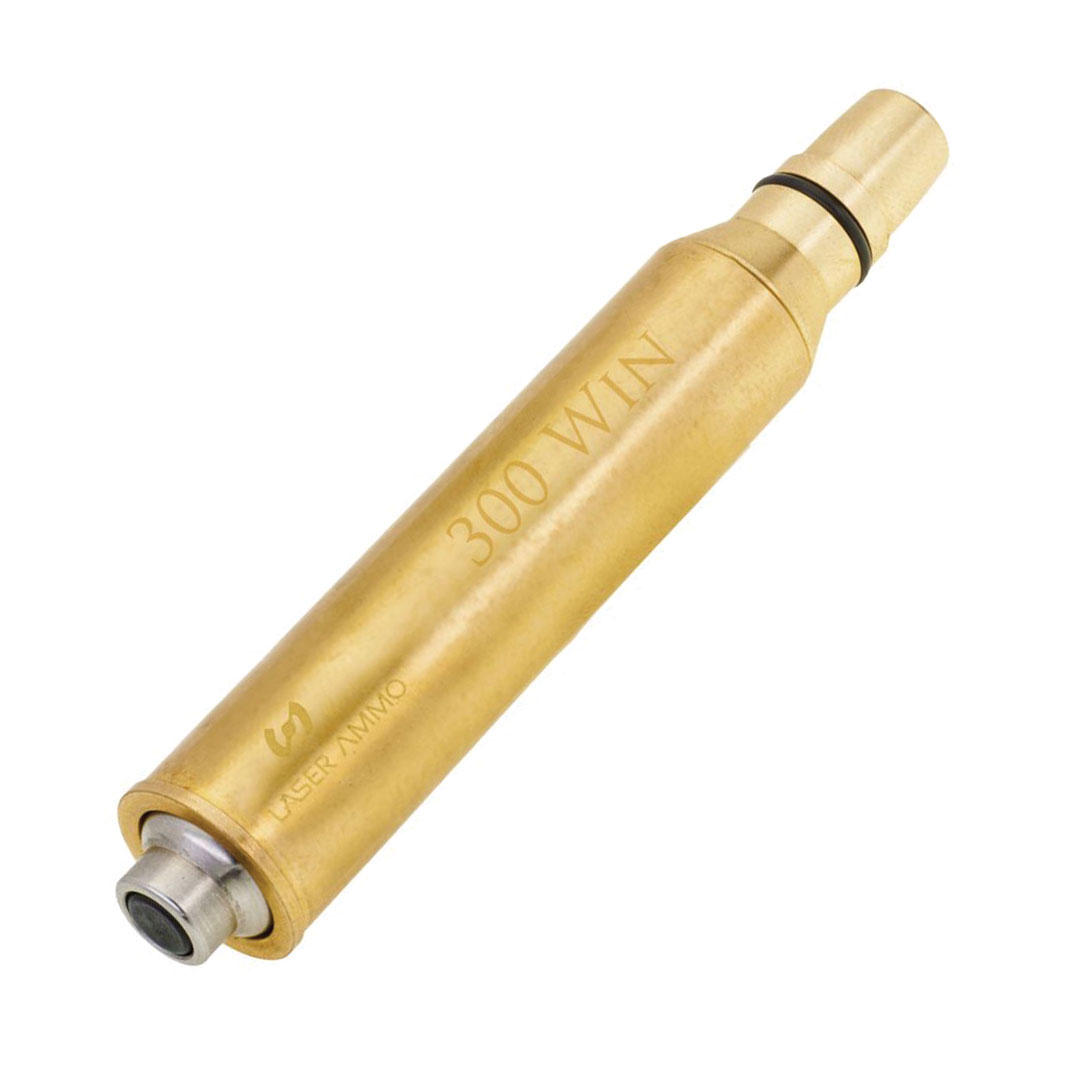
In-Chamber Laser Trainer
These are essentially reactive snap-caps that fit into the chamber of the firearm. They are specific to the caliber of the gun, like a 9mm laser trainer. They’re best for double-action firearms that drop the firing pin with every trigger pull. Single-action semi-automatics with an external hammer like a 1911 won’t need to have the action worked each time, but you will have to pull the hammer back each time. If you don’t have a double-action pistol or an external hammer, the slide will need to be worked each time you fire to reset the firing pin. They will not feed from a magazine and remain in the chamber each time you work the action. With revolvers, you’d need at least two for repeat fire, or you’d need to rotate the cylinder back to the chambered round each time you fire.
Pros: training on your gun allows for holster draw-and-fire exercises, rarely (if ever) needs to be zeroed, durable and will last through thousands of shots, available in common calibers, good choice on a budget when compared to full laser training kits and sets
Cons: each one is limited to a single caliber, not available in uncommon or rarer calibers (although some may have adapters sold separately), will eventually need to be replaced
In-chamber systems are the best dry-fire training system for those who want to use their own firearm and are looking for a more reactive setup than plain snap-caps.
Laser Training Pistols
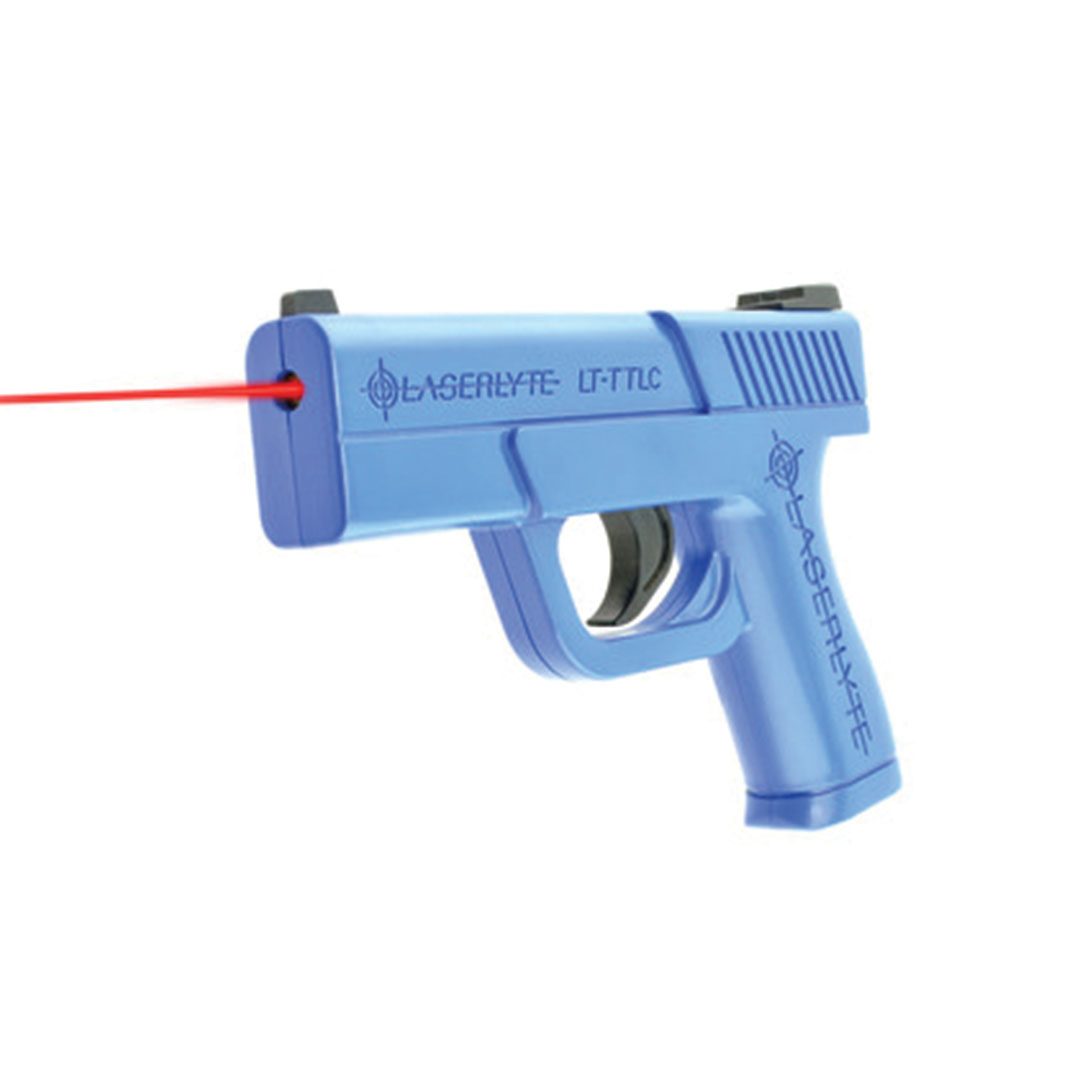
Laser Training Pistol
These are pistols that are replicas of actual guns, like a Glock dry-fire kit for example. Although they look like dummy guns (aka “blue guns”), they are not the same. They are molded from the exact shape of the firearms they represent, utilizing a laser and target system that is usually sold in a set. Some even have simulated recoil on each shot so that you can practice target acquisition.
Pros: no chance of accidental/negligent discharge, no need to reset firing pin after every shot, can practice realistic simulations of draw-and-fire holster exercises, included target system allows you to fine-tune your skills
Cons: limited models available, doesn’t have the same “feel” of weight and trigger pull as an actual gun, can be expensive, if it’s a different model than your gun it will not exactly replicate grip and other specifics
Laser training pistols are the best dry-fire training system for safety and specific models, especially for shooters who want to fire repeatedly without resetting firing pins and are looking for the most accurate setup.
To recap, the two basic types of laser training systems are laser training pistols and those used with existing firearms. For your current gun, you can choose from those that go in the muzzle or those that are chambered. They all have their pros and cons depending on your needs, preferences, and budget. Shop the three most popular brands here:
Leave us a comment & let us know what you think!
- Do all 9mm bullets fit 9mm guns? 3 Popular 9mm Calibers - August 13, 2021
- Hot Weather Tips: 5 Easy Hacks - July 19, 2021
- The Bugout Bag and The Family Bugout Bag 101 - June 18, 2021
Related Posts
« Eye Dominance: Why Shooters Need to Find Their Dominant Eye How to Find a Scope Cap for a Rifle Scope »


